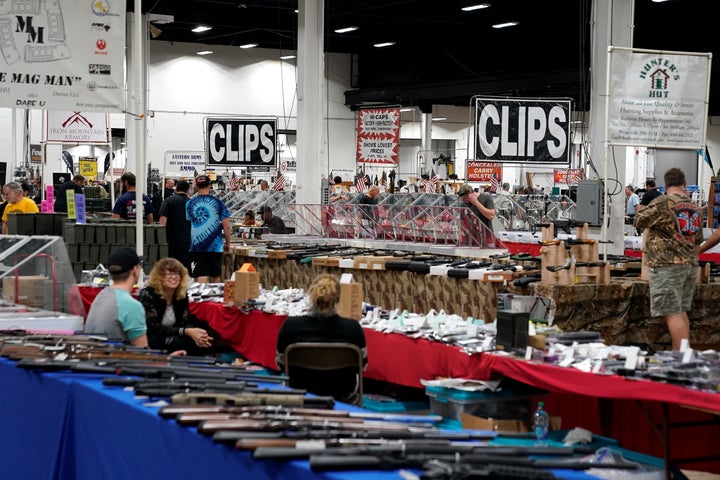
For those folks in the gun violence prevention (GVP) movement who have been lamenting the pro-gun attitudes of the Oval Office subtenant and his buddies on Capitol Hill, as my beloved grandmother used to say, I got news for you. And the news is that the issue of injuries caused by guns may eventually take care of itself because sales of guns are not only going into the toilet but there doesn’t seem to be enough water to flush.
The day after Black Friday, which is when Americans really celebrate Turkey Day, there were stories all over the place about how FBI-NICS background checks were the highest one-day total ever seen. Know what the numbers were at the end of the month? They were 12 percent lower than November 2016. And overall, it looks like total background checks for 2017 are going to come in at least 15 percent below the previous year, and that’s only if December turns out to be a very good month, but nobody in the gun industry is holding their breath.
The media celebration after Black Friday was led by The Washington Times, which when it comes to promoting guns is as much a house organ for the industry as the NRA. Their headline on November 29 read: Gun background checks hit record high on black Friday. On December 8 the story changed: Gun profits dropping as fear-motivated buying decreases. That only took a week, the latter report based on an announcement by the head of Smith & Wesson, a nice guy named Jim Debney, who had to explain to his stockholders why their investment in his company has dropped by nearly 40 percent while the overall stock market has gone up by about the same degree.
To his credit, Debney admitted that he had no idea how much more production would have to be cut in order to “match demand,” a polite way of letting the employees know that more layoffs may be coming soon. Like everyone else in the gun industry, Debney cited the disappearance of the “fear factor” as the primary driver for the drop in consumer demand, the idea being that gun sales are directly tied to whether gun owners believe their precious toys may be taken away. This has been the standard explanation for the ups and downs of the gun market for the last 40 years, but like everything else carried over from the last century, I’m not sure the argument still holds up.
Earlier this year the gun researchers at Harvard and Northeastern broke into the news with a survey of gun owners which showed that a group of what are called “super owners,” representing 15 percent of all gun owners, now own on average at least 17 guns. Meanwhile, the percentage of American homes containing firearms continues to go down. What the survey did not reveal, unfortunately, was the average age of these super owners, but I’m willing to bet that most of them are older rather than younger and have been buying guns for years. This past weekend I went to a gun show and noticed that virtually everyone wandering around looking at guns, gun parts, ammunition, holsters and assorted crap were men in their ’50s and ’60s, a consumer group that can hardly be said to represent future growth for the gun industry, or any industry based on consumer sales.
When I was a kid, starting at age 6 or 7, I always wore my Lone Ranger hat and toy gun. Now kids at that age are playing with electronic devices; my 12-year-old grandson just got his first droid. For those folks who have been fighting the GVP battle against what they consider to be overwhelming odds, they might step back for a moment and consider that there’s one factor working in their favor, and that’s something called time. And the gun industry can’t do anything to stop time from moving forward, no matter how deep gun prices are slashed.
